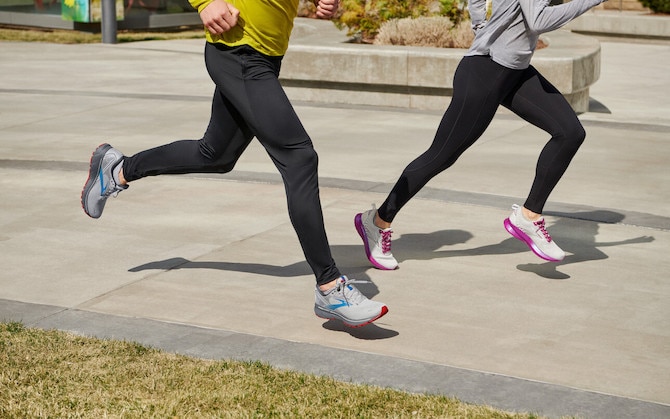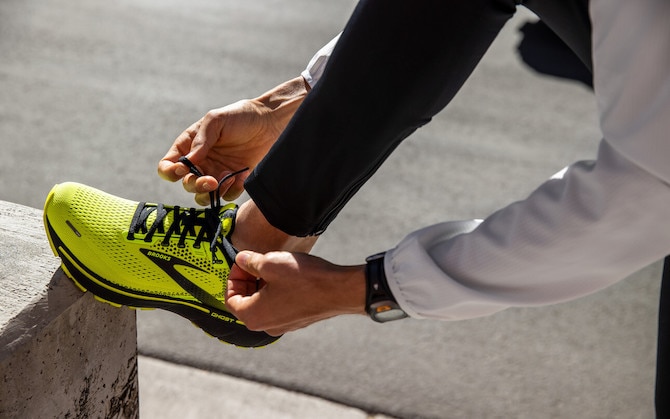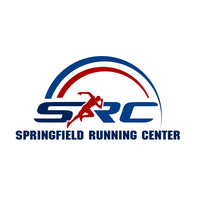If you're shopping for your first pair of running or walking shoes, you may be asking yourself, "How should running shoes fit?" You may think it's as simple as choosing whatever your normal, everyday shoe size is. And while you may end up with the same number, there are a few other factors to consider before settling on a pair of training or racing shoes.
Running itself can feel difficult and uncomfortable when you're first getting started, but that shouldn't be because of your shoes. Those should feel comfortable no matter what.
Not only that, but wearing improperly fitting shoes for weeks and months on end can lead to foot or leg injuries, such as nerve impingement, tendinitis, heel pain, stress fractures, and ankle sprains — all of which you definitely want to avoid while chasing your goals. Running/walking shoes are an investment, so you want to ensure you get the best comfort and fit. We'll break down what to check off when it comes to how running shoes should fit.
How should running/walking shoes fit?
One of the best things you can do is visit your local running specialty store and have an associate properly fit you for shoes. You might be surprised to learn you may need a different size running shoe than an everyday shoe. Not only that, but many shoe brands and models vary in sizing, with some fitting more narrowly than others, so it's always a good idea to try a new-to-you shoe on in person before committing to it and adding to your online shopping cart.

It may vary by brand and length of wear, but we are generous and allow you to return or exchange a pair of shoes within a period of 30 days, assuming you haven't put too much wear and tear on them. We will let you try the shoes out on a treadmill, and can perform a gait analysis to determine if you need a neutral or stability shoe. We can also help you choose the appropriate shoes for the surface you'll be running on, whether it's roads or trails.
When it comes to running shoes, you want to make sure you have enough room between your toes and the front of the shoes (about a thumb's width) to ensure they're not too small. Take it from someone who has experienced running in too-small shoes before: It's not fun, and you'll probably end up with bruised toenails or blisters.
You should have enough room to wiggle and spread your toes widely while you're running and walking. Tingling or numbness in the toes is another sign your shoes fit too tight. If you've found you have wider feet than the average person, seek out shoes that offer a wide-fit option, as many brands do.
At the same time, you'll also want to make sure your shoes aren't too big or loose and your feet don't slide around while you're running. They should fit snugly, but not too tight, around your mid-foot and heel, with comfortable cupping at the back of the heel. If you experience blisters or chafing above the back of your heel, you may also want to try running/waling in higher cut socks, and make sure they're made of moisture-wicking technical fabric meant for running or exercise. When laced up, your shoes should be tied securely enough that the laces won't come undone mid-run, but not so tight that it causes pain on the top of your foot.
Another thing to keep in mind is that feet swell throughout the day, so it's better to try on shoes in the afternoon. Your feet may lengthen as your arches shift over time as well, so it's normal for your size to change in a given year. Additionally, if you wear orthotics for extra foot support or because you deal with a chronic condition like plantar fasciitis, make sure you bring them with you when trying on shoes in person, as you'll want to make sure your new shoes fit with them inserted as well.

An investment well worth it
Again, shoes are one of the biggest investments you'll make when you commit to running/walking regularly. It might seem like a lot of work to make sure you've got the right ones for you, but you won't regret taking the time to do so, especially if you consult experts like our local SRC associates, or even a podiatrist or physical therapist.
By ensuring you're wearing a properly fitted shoe for your individual situation, you can set yourself up for a comfortable and enjoyable training cycle where you're sure to achieve your goals.
Our writer's advice is intended for informational or general educational purposes only. We always encourage you to speak with your physician or healthcare provider before making any adjustments to your running, nutrition, or fitness routines.

